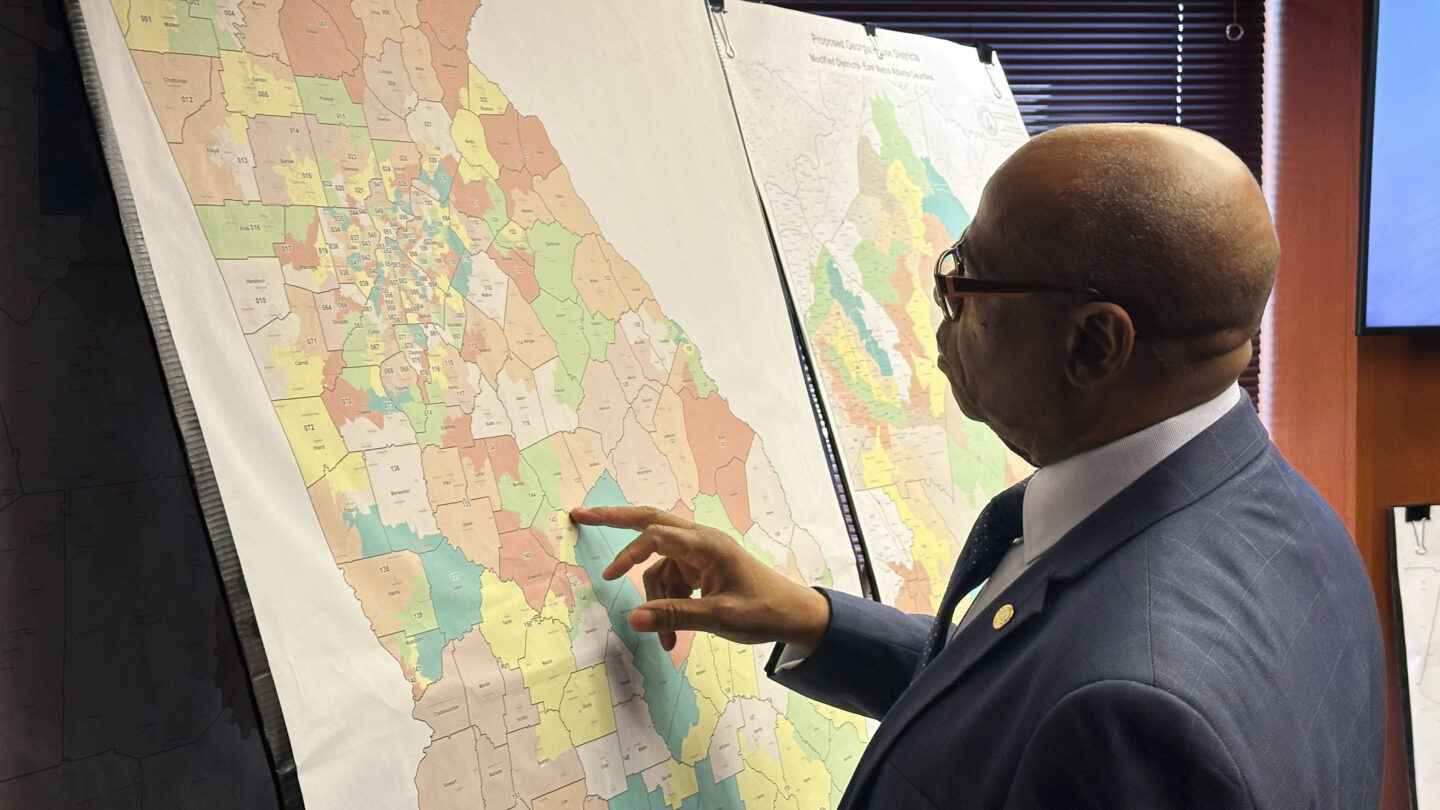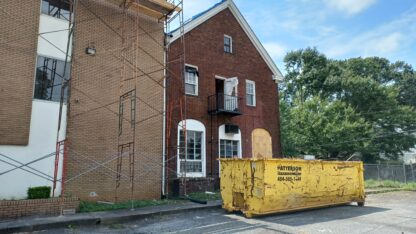Georgia Republicans move to cut losses as they propose majority-Black districts in special session

Georgia lawmakers opened a special session Wednesday as majority Republicans moved to minimize their losses while also trying to increase the number of Black-majority districts to comply with a federal court order.
It’s one in a series of redistricting sessions across the South after the U.S. Supreme Court upheld the 1964 Voting Rights Act, clearing the way for Black voters to win changes from courts.
Georgia House Republicans released a map on Tuesday that would likely cost them only two seats from their current 102-78 majority while creating five more majority-Black districts that Democrats would likely win. That’s because the map would also pair three sets of Democratic incumbents, meaning Democrats would lose three of those members after 2024 elections
And Senate Republicans could improve on that performance — the map they proposed Monday creates two additional Black-majority voting districts, but would probably retain the GOP’s current 33-23 edge in the upper chamber.
Still to come is a new congressional map, where lawmakers have been ordered to draw one new Black-majority seat. Republicans currently hold a 9-5 edge in Georgia’s congressional delegation. To hold that margin, they’d have to dissolve the only congressional district held by a Democrat that’s not majority-Black, Lucy McBath’s 7th District in the Atlanta suburbs of Gwinnett and Fulton counties.
It’s unclear if that would be legal. U.S. District Judge Steve Jones wrote in his order that Georgia can’t fix its problems “by eliminating minority opportunity districts elsewhere.”
Republicans said their plans would comply with Jones’ directives.
“We believe this plan is better than what was proposed by the plaintiffs in litigation, and it complies with the order,” said Rob Levertt, an Elberton Republican who chairs the House Reapportionment and Redistricting Committee.
But Democrats and some people who sued over the districts suggested Republicans were falling short of Jones’ benchmark.
“The majority proposal is a shell game that continues to dilute the voting power of Black Georgians,” Senate Minority Leader Gloria Butler, a Stone Mountain Democrat, said at a news conference Wednesday.
In October, Jones ordered Georgia to draw Black majorities in the additional districts, finding that current maps drawn by Republicans after the 2020 Census illegally diluted Black votes. That ruling came after a trial in which plaintiffs argued that opportunities for Black voters hadn’t increased even though their share of the population had risen in the state over the previous decade.
Because Black voters in Georgia vote overwhelmingly for Democrats, new Black-majority districts will favor the party. But Democratic hopes to gain seats may have been premature.
The House map would create two new Black majority districts around Macon and two touching parts of Henry County in Atlanta’s southern suburbs. Finally, a fifth Black-majority district would be created in suburban Douglas County west of Atlanta.
Only one Macon-area district would have a current incumbent, Republican Ken Vance of Milledgeville. The other four would be open seats in 2024.
Paired House Democrats would include Saira Draper and Becky Evans of Atlanta, Teri Anulewicz and Doug Stoner of Smyrna, and Sam Park and Greg Kennard of Lawrenceville. One set of Republicans would be paired, David Knight of Griffin and Beth Camp of Concord.
Under Georgia law, state legislators must have lived in their districts for a year before they are elected. Because 2024’s election is less than a year away, it’s too late for anyone to move to another district to run.
The Senate map doesn’t pair any incumbents. It increases the number of Black majority districts by eliminating two white-majority districts currently represented by Democrats — State Sens. Jason Esteves and Elena Parent, both of Atlanta.
Advocates testified that the GOP Senate map falls short of complying because it leaves intact some of the 10 Senate districts Jones identified as illegal.
Districts the judge found to be illegal “remain virtually unchanged and leave some of our clients still in districts where they cannot elect candidates of their choice,” said Rahul Garabadu, an American Civil Liberties Union attorney who represents some of the plaintiffs who won the lawsuit.
Garabudu said the map also fails because most Black people who would gain representation in new Black-majority districts live outside the belt of districts Jones identified as flawed.
“This proposal does not do what it needs to do, and it does not create additional representation for Black voters,” Aunna Dennis of Common Cause Georgia told the Senate committee.
Democrats released their own Senate map Wednesday. It would convert two Republican districts held by Sens. Marty Harbin of Tyrone and Brian Strickland of McDonough into majority-Black districts.
The state has pledged to appeal the federal judge’s order. If the state later wins an appeal, Georgia could have new districts in 2024 and revert to current lines in 2026. But for now, it’s Jones, and not Republicans, who will decide whether lawmakers complied with his order.








